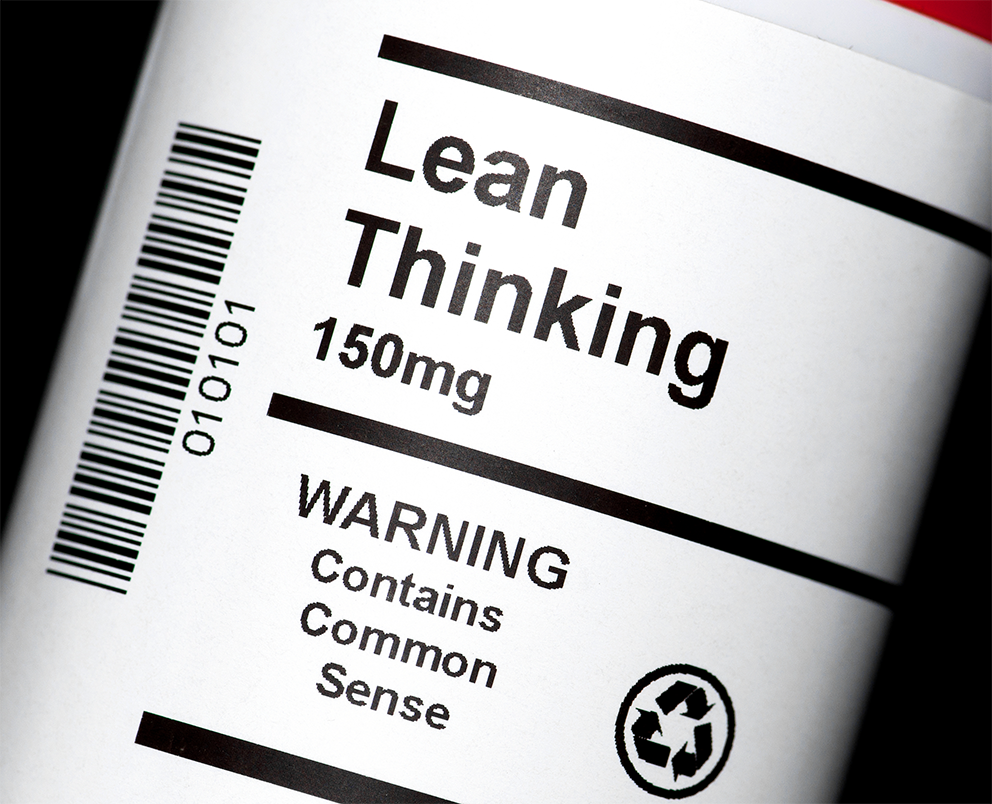I was introduced to Lean Manufacturing several years ago by my manager. When I first reviewed the information, my impression was that it’s the common sense approach to manufacturing. Why would someone go to the trouble of writing a book about it? Then my manager encouraged me to use the tools by Lean to map out workflows and manufacturing processes. At this point, I began to see how this could provide a competitive advantage. Value Stream Mapping, a Lean tool, defines each production step’s value within a manufacturing process and references it to the customer’s value perspective. Lean classifies each step in a workflow by its value, as a value-add or a non-value add step. Value-add steps are those which can be charged for as a line item on an invoice. Non-value add actions often occur to accommodate equipment restrictions, physical ability and may appear “easier” on the surface. However, studies of the printing industry have revealed that 85% to 90% of all processes deliver no value to the customer. In other words, in a ten-step manufacturing process, eight to nine of the steps provide no direct benefit to the customer.
Konica Minolta Business Solutions, U.S.A., Inc. (Konica Minolta) has been selling solutions for quite some time. However, in general, we commonly sell solutions into specific verticals or to a client reacting to a specific situation. Many opportunities exist within workflows where customers are unaware of the waste or recognize it as overhead. Operational costs or unrecognized waste are where competitive advantage is alive and well. At this point you might be thinking, “Great, now I need to sell solutions for problems that no one knows about.” In short, yes, however, Lean Manufacturing maintains toolsets for finding and defining problems within a workflow. By using Lean tools, workflows can be pulled apart and redesigned with fewer bottlenecks with only one focus, the value to the customer. By using automation tools such as AccurioPro Connect, Racami, and Solimar – to name a few, we can eliminate manual foreground application processes that drain time and are fraught with error. A foreground process is when an operator opens an application and manually performs some task. I have created many how-to user guides documenting workflows using screenshots and callouts throughout my career to make foreground processes easier for my customers. One other factor to consider is that you can sell the mapping of a customer’s workflow – A Lean Workflow Assessment via the Solutions Consultant.

Lean Manufacturing is the systematic approach to seeing a manufacturing process from start to finish as it correlates to value and time. Lean Manufacturing uses the same reference points that the customer uses to measure value. The result of mapping a customer’s process defines what and where waste exists, how much it saves in hard dollars (Solutions ROI), and what new capacities emerge. You are already very familiar with value-add when you purchase a product; often there are only two items on your invoice, the product or service itself and shipping the only two things really valued. However, many other steps exist to deliver that product to you. A value-stream map shows each step in the overall manufacturing process and defines each, using the customer’s value definition. The information derived from mapping the workflow provides opportunities beyond that of the print engine, and beyond that of what our competitors are viewing. Like most of our competitors, we target steps in workflows for deletion or automation. However, unlike everyone else, we have a complete view of the entire workflow relating to waste, value and time. Value stream mapping defines each step in a process as a value-add or non-value add step and the amount of time it takes to complete. Time equals money, and non-value add equals waste.
Example: A printer has a workflow that contains twelve steps. One step in the process is to enter all the information from the web storefronts into their queuing system that takes five minutes. On average, the printer receives 25 jobs per day.
(PayRate+Taxes+Insurance) × Task Time × Jobs Per day = Waste
The process of moving a job from a web storefront to a queue or recording the data in a MIS-System has no value as it pertains to the customer. Lean terminology classifies the step as non-value add. By the way, the above example is real. In this case, “AccurioPro Connect” automates the process of queuing jobs and recording their associated data.
Some non-value add steps cannot be eliminated or automated using current technology. But keep in mind that four years ago, G7 was just coming up to speed with all of its associated foreground manual procedures, and now it’s a button on the AccurioPress series color digital presses. The rate at which technology is transforming our industry has increased dramatically, and our solutions are leading the way.
A Konica Minolta Lean Workflow Assessment drives best practices that are applied to improve, eliminate or automate processes within the workflow. Using Lean tools can calculate a solution’s ROI uses the burden rate multiplied by the recorded time. Repetitive operations like that of the example add up very quickly when calculating weeks, months and years. Lean will expand opportunities to other areas both upstream and downstream of the machine where no one is looking, where competitive advantage thrives.
I have been writing Lean Assessments for several years now. Year over year, I believe they have gotten better as the number of sales has increased. At present, of the completed assessments in the past two years, all of them have produced continual conversations with upper management and C-suite individuals. Of that, 63% have closed business directly addressing all or a portion of what the assessment revealed.
Please contact Michael Toth to learn more about Lean Manufacturing.